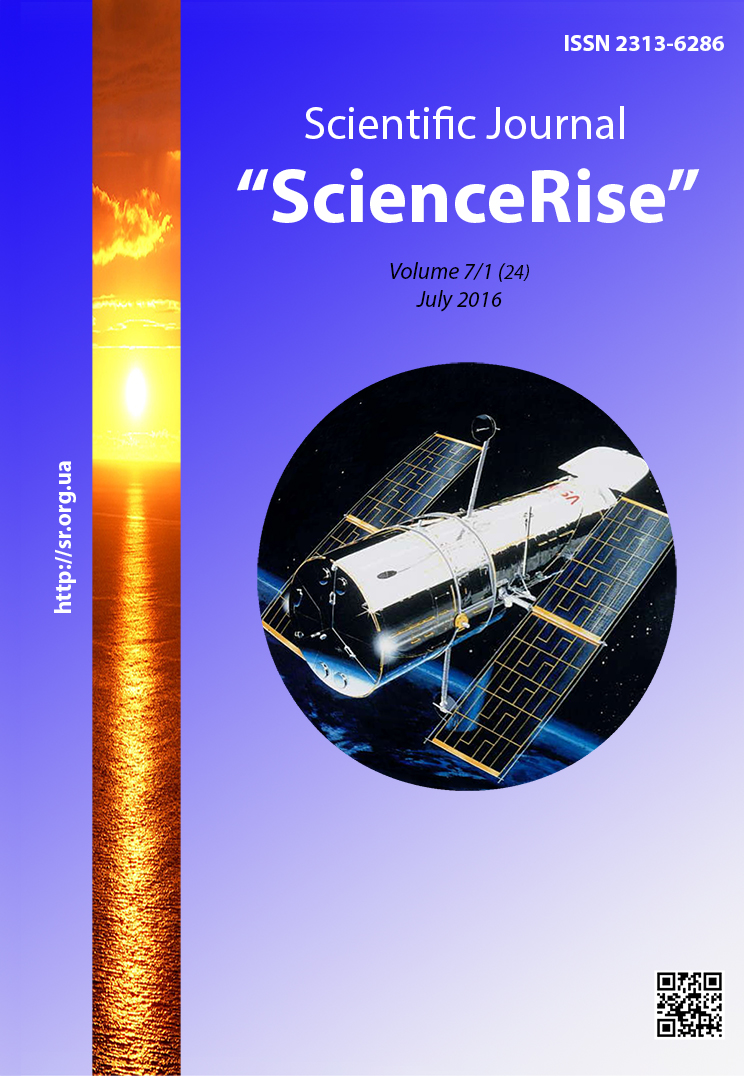Цифровые технологии и перековка железных людей
DOI:
https://doi.org/10.15587/2313-8416.2016.69141Ключевые слова:
кремниевая раса, SiRace, цифровой век, киборг, миф о расах, Гесиод, диджитализацияАннотация
Цифровые технологии не только трансформируют социальную и культурную реальность; они вносят изменения и в природу человека. Поэтому имеет смысл говорить о появлении кремниевой расы людей (Silicon Race, SiRace). Железные люди сходят со сцены всемирной истории. Этот процесс необратим, но отдавая себе отчет как в возникающих при этом перспективах, так и в сопутствующих им рисках, мы можем направлять усилия на то, чтобы перековка железных людей прошла успешно
Библиографические ссылки
Fukuyama, F. (2002). Our posthuman future: Consequences of the biotechnology revolution. New York, NY: Farrar, Straus and Giroux, 256.
Kurzweil, R. (2004). Human body version 2.0. In The scientific conquest of death: Essay on infinite lifespans. Buenos Aires: LibrosEnRed, 93–106.
Palese, E. (2012). Robots and cyborgs: to be or to have a body? Poiesis & Praxis, 8 (4), 191–196. doi: 10.1007/s10202-012-0107-4
Bamford, S. (2012). A framework for approaches to transfer of a mind's substrate. International Journal of Machine Consciousness, 4 (1), 23–34. doi: 10.1142/s1793843012400021
Floridi, L. (2012). The fourth revolution. The Philosophers’ Magazine, 57, 96–101. doi: 10.5840/tpm20125756
Clark, A. (2003). Natural-born cyborgs: Minds, technologies, and the future of human intelligence. New York, NY: Oxford University Press, 229.
Spengler, O. (1993). Zakat Yevropy [The decline of the West] Vol. 1. Moscow: Mysl, 663.
Halapsis, A. (2016). Historical process and heavenly management: Hesiod’s message. ScienceRise, 5 (1 (22)), 63. doi: 10.15587/2313-8416.2016.69142
Halapsis, A. (2015). Urbis et orbis: Non-Euclidean space of history. Evropský filozofický a historický diskurz, 1 (2), 37–42.
Houtman, D., Aupers, S. (2010). Religions of modernity: Relocating the sacred to the self and the digital. Religions of modernity: Relocating the sacred to the self and the digital. Leiden: Brill, 1–29.
Zandbergen, D. (2010). Silicon Valley New Age: The co-constitution of the digital and the sacred. Religions of modernity: relocating the sacred to the self and the digital. Leiden: Brill, 161–185.
Halapsis, A. (2016). Number and reality: sources of scientific knowledge. ScienceRise, 6 (1 (23)), 59. doi: 10.15587/2313-8416.2016.71546
Steinhart, E. (1998). Digital metaphysics. The digital phoenix: How computers are changing philosophy. Oxford: Blackwell, 117–134.
Barassi, V. (2015). Activism on the web: Everyday struggles against digital capitalism. New York, NY; London: Routledge, 180.
Mossberger, K., Tolbert, C. J., & McNeal, R. S. (2008). Digital citizenship: The internet, society, and participation. Cambridge, MA: MIT Press, 221.
Wilhelm, A. G. (2004). Digital nation: Toward an inclusive information society. Cambridge, MA: MIT Press, 161.
Halapsis, A. (2014). Gosudarstvo i budushchee [A state and future]. Perspectives, 61 (3), 81–87.
Waite, C. (2013). The digital evolution of an American identity. New York, NY; London: Routledge, 129.
Franciscus. Message of His Holiness Pope Francis for the 48th World Communications Day (2014). Available at: http://www.news.va/en/news/communication-at-the-service-of-an-authentic-cultu
Sass, S. L. (2011). The substance of civilization materials and human history from the Stone age to the Age of silicon. New York, NY: Arcade, 328.
Fairclough, H. R. (Ed.) Virgil. (1938). Eclogues. Georgics. Aeneid: Books 1-6. Vol. I. Cambridge, MA: Harvard University Press, 593.
Miller, F. J. (Ed.) (1971). Ovid. Metamorphoses. Vol. I: Books 1-8. Cambridge, MA: Harvard University Press, 467.
Most, G. W. (Ed.) (2006). Hesiod. Theogony. Works and Days. Testimonia. Cambridge, MA; London: Harvard University Press, 308.
Hesiod. Polnoe sobranie tekstov (2001). Moscow: Labirint, 256.
Yudell, M., Roberts, D., DeSalle, R., Tishkoff, S. (2016). Taking race out of human genetics. Science, 351 (6273), 564–565. doi: 10.1126/science.aac4951
Yudell, M., Roberts, D., DeSalle, R., Tishkoff, S. (2016). Taking race out of human genetics. Science, 351 (6273), 564–565. doi: 10.1126/science.aac4951
McNeill, W. H. (1991). The rise of the West: A history of the human community; with a retrospective essay. Chicago, IL: University of Chicago Press, 860.
Osborne, R. (2008). Civilization: A new history of the Western world. New York, NY: Pegasus, 544.
Here’s how you can watch Elon Musk live at Code Conference (2016). Available at: http://www.recode.net/2016/6/2/11835550/watch-elon-musk-code-conference
Prodhan, G. (2016). Europe’s robots to become 'electronic persons' under draft plan. Available at: http://www.reuters.com/article/us-europe-robotics-lawmaking-idUSKCN0Z72AY
Загрузки
Опубликован
Выпуск
Раздел
Лицензия
Copyright (c) 2016 Алексей Владиславович Халапсис

Это произведение доступно по лицензии Creative Commons «Attribution» («Атрибуция») 4.0 Всемирная.
Наше издание использует положения об авторских правах Creative Commons CC BY для журналов открытого доступа.
Авторы, которые публикуются в этом журнале, соглашаются со следующими условиями:
1. Авторы оставляют за собой право на авторство своей работы и передают журналу право первой публикации этой работы на условиях лицензии Creative Commons CC BY, которая позволяет другим лицам свободно распространять опубликованную работу с обязательной ссылкой на авторов оригинальной работы и первую публикацию работы в этом журнале.
2. Авторы имеют право заключать самостоятельные дополнительные соглашения, которые касаются неэксклюзивного распространения работы в том виде, в котором она была опубликована этим журналом (например, размещать работу в электронном хранилище учреждения или публиковать в составе монографии), при условии сохранения ссылки на первую публикацию работы в этом журнале .

